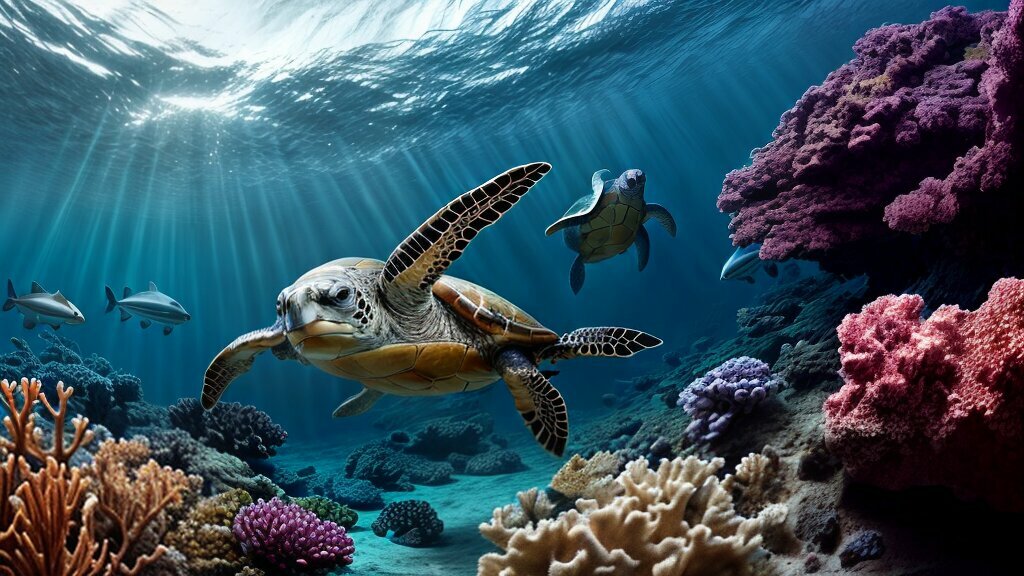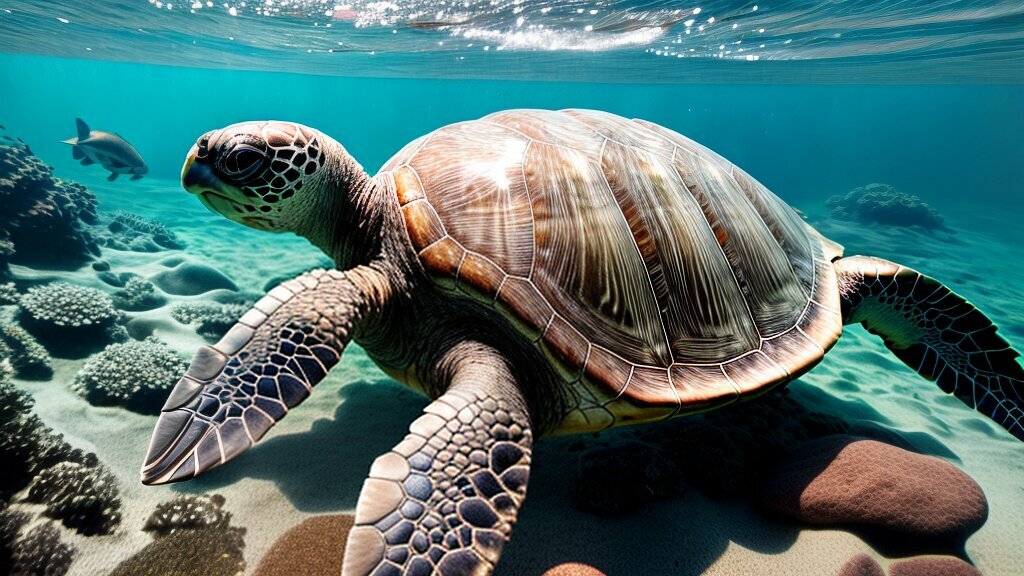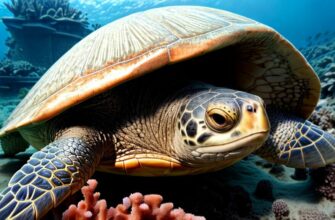Sea turtles are one of the most fascinating creatures in the ocean and are known for their powerful swimming abilities. But just how fast can they swim? In this section, we will explore the speed capabilities of sea turtles and uncover fascinating speed secrets. We will discuss the different factors that influence their swimming speed and provide insights into their remarkable abilities.
Sea turtles are equipped with powerful flippers that help them navigate through the water with ease. Their streamlined bodies and hydrodynamic shell also assist in their swimming abilities, allowing them to swim at impressive speeds for extended periods.
But what are the factors that affect their speed? The answer lies in their physical characteristics, such as size and shape, as well as environmental factors like water temperature and currents. By understanding these factors, we can appreciate the remarkable capabilities of these creatures.
- Key Takeaways
- Factors Affecting Sea Turtle Swimming Speed
- Speed of Different Sea Turtle Species
- Fastest Sea Turtle Species and Speed Records
- Conclusion
- FAQ
- Q: How fast can a sea turtle swim?
- Q: What factors affect sea turtle swimming speed?
- Q: How does the speed of sea turtles vary among different species?
- Q: Which sea turtle species are the fastest?
- Q: What is the conclusion about sea turtle swimming speed?
Key Takeaways
- Sea turtles are known for their powerful swimming abilities.
- Their physical characteristics and environmental factors play a significant role in their swimming speed.
Factors Affecting Sea Turtle Swimming Speed
While sea turtles are known for their fast swimming abilities, certain factors can affect their speed. Physical characteristics, such as size and shape, play a significant role in their ability to swim quickly.
For example, the streamlined body of the Loggerhead turtle allows it to move efficiently through the water, while the bulky body of the Green turtle can slow it down. Additionally, the flippers of sea turtles are crucial to their swimming speed, with larger flippers generating more propulsion.
Environmental factors also impact sea turtle swimming capabilities. Water temperature can affect their metabolism, with warmer waters increasing their speed. Currents and waves also influence their swimming speed, with strong currents potentially hindering their movement.
It is interesting to note that sea turtle swimming speed can vary between different species. For example, the Leatherback turtle is known for its rapid swimming speed, while the Hawksbill turtle is known for its agility. Understanding these factors can provide valuable insights into the remarkable swimming abilities of sea turtles.
Speed of Different Sea Turtle Species
Sea turtles are fascinating creatures with impressive swimming capabilities. However, not all sea turtle species swim at the same speed, and there are noticeable differences in their swimming abilities.
At the top of the speed chart is the Leatherback turtle, capable of swimming up to speeds of 22 miles per hour. This remarkable speed makes it the fastest of all sea turtle species. The Leatherback’s hydrodynamic body shape and powerful front flippers allow it to dive deep and swim with incredible speed and agility.
The Green turtle is another fast swimmer, capable of speeds of up to 1.5 to 2.0 meters per second. The Green turtle’s streamlined body and powerful back flippers give it the ability to quickly accelerate and maintain a fast swimming speed.
The Loggerhead turtle is known for its medium swimming speed, capable of cruising at speeds of up to 0.8 to 1.9 meters per second. Its large head and powerful jaws allow it to consume a variety of prey while swimming at moderate speeds.
Next on the list is the Hawksbill turtle, known for its remarkable speed and agility. The Hawksbill can swim up to speeds of 12 miles per hour, making it one of the fastest swimmers among sea turtle species. Its lightweight body and uniquely shaped shell enable it to maneuver through tight spaces with ease.
The Kemp’s Ridley turtle is the smallest of all sea turtle species and also swims at a relatively slow speed, reaching a maximum of 0.3 meters per second. Despite its slow swimming speed, it is still capable of migrating long distances across the ocean.
Overall, each sea turtle species has its distinct swimming capabilities, and their unique physical attributes allow them to navigate their environment with remarkable speed and agility.
Fastest Sea Turtle Species and Speed Records
While all sea turtle species are impressive swimmers, some are faster than others. The Hawksbill turtle is considered the fastest, with recorded speeds of up to 22 miles per hour. This remarkable speed allows them to evade predators and migrate long distances.
Other species that have exhibited impressive swimming abilities include the Leatherback turtle, which can swim at an average speed of 4.5 miles per hour and reach bursts of up to 22 miles per hour. The Green turtle is also an agile swimmer, with the ability to swim at an average speed of 1.5 to 2 miles per hour.
It’s important to note that these are just averages and that individual turtles can vary in their swimming abilities. Factors such as size, age, and overall health can affect a sea turtle’s speed.
Despite these variations, sea turtle speed records continue to inspire awe and admiration in researchers and conservationists. These amazing creatures are a testament to the resilience and adaptability of marine life.
Image source: seowriting.ai
Conclusion
In conclusion, sea turtles are remarkable creatures with impressive swimming abilities. Their speed capabilities are influenced by factors such as their physical characteristics and environmental conditions. We have seen that different sea turtle species exhibit varying levels of speed and agility, with the Hawksbill turtle being one of the fastest.
But beyond their speed, sea turtles play a vital role in maintaining the health of marine ecosystems. By consuming sea grass and jellyfish, they help to regulate the food chain and keep populations in check. Additionally, their nesting habits provide important nutrient sources for coastal ecosystems.
In summary, sea turtles are not only fascinating to watch, but also crucial to the health of oceanic ecosystems. By understanding and appreciating their incredible swimming abilities, we can better protect and preserve these beloved creatures for future generations to marvel at.
FAQ
Q: How fast can a sea turtle swim?
A: Sea turtles have impressive speed capabilities. The exact speed varies depending on factors such as species, size, and environmental conditions.
Q: What factors affect sea turtle swimming speed?
A: Several factors can affect the swimming speed of sea turtles. Physical characteristics, including size and shape, play a role in their ability to swim quickly. Environmental factors such as water temperature and currents can also impact their speed.
Q: How does the speed of sea turtles vary among different species?
A: Different sea turtle species have varying swimming speeds. The Leatherback turtle is known for its rapid swimming, while the Green turtle is admired for its agility. The average swimming speeds of various species can differ significantly.
Q: Which sea turtle species are the fastest?
A: The Hawksbill turtle is considered one of the fastest sea turtle species, known for its impressive speed. Other species have also exhibited remarkable swimming abilities, resulting in various speed records.
Q: What is the conclusion about sea turtle swimming speed?
A: Sea turtles possess remarkable swimming abilities and can achieve impressive speeds. Understanding their speed capabilities helps to appreciate their survival skills and their important role in marine ecosystems.












